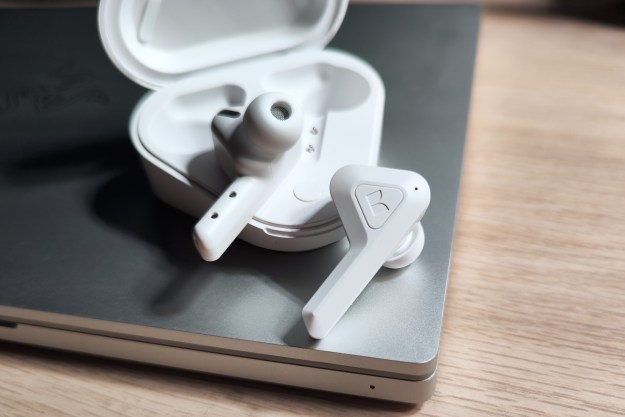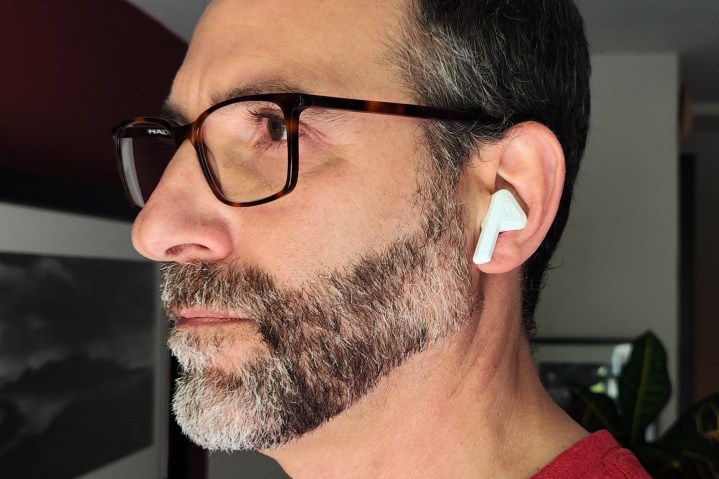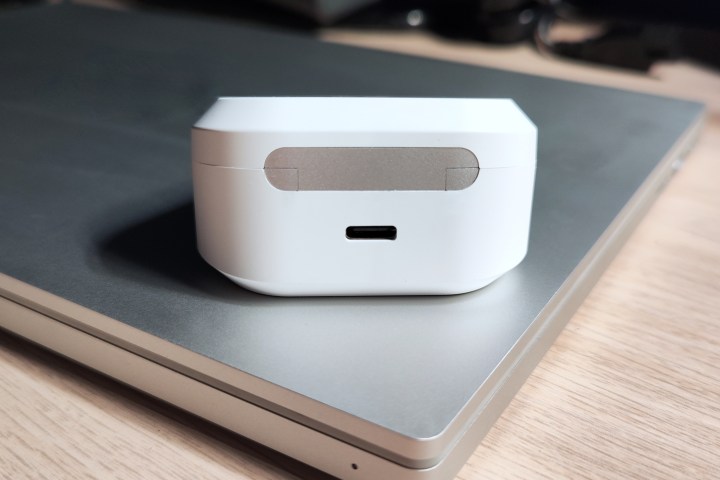
“Lacking many in-demand features, the DNA Go aren't much of a Monster.”
- Wireless charging
- Good controls
- Wear sensors
- Plenty of eartips
- No EQ or control adjustments
- No ANC or transparency modes
- No Bluetooth Multipoint
- Mediocre call quality
- Uninspiring sound
There are plenty of decent wireless earbuds you can buy. We maintain a list of the very best wireless earbuds to help you find them, and we also have a separate list if your budget is limited to under $100 — again, there is no shortage of great options.
The Monster DNA Go, even at the relatively affordable price of just $80, don’t belong on either of these lists.
Let me explain why I’ve singled out these earbuds. There are lots of wireless earbuds that have come across my desk over the years that I wouldn’t recommend. So why write about the DNA Go? Two reasons. First: Monster is a well-known brand with a decent marketing budget. Unlike most of the so-so wireless earbuds on Amazon with names you’ve never heard of, you’ve probably heard of Monster. And I’m guessing that if you have, you might already have a favorable opinion of it.
Second is that Monster’s description of the DNA Go uses language intended to make you think that the earbuds have features they simply do not have.
Over-promise, under-deliver

When Monster first announced the DNA Go (available in black or white), it claimed the earbuds would support Qualcomm’s Snapdragon Sound-based aptX Lossless codec — the first Bluetooth codec to deliver bit-perfect CD-quality sound. I’d already done a lot of research into aptX Lossless, and I knew it wasn’t the kind of technology you’d build into a set of sub-$100 earbuds, so I double-checked that claim with Monster’s reps — and got no response. Fast forward to the official launch of the DNA Go in February 2023 and Monster still refers to aptX Lossless both on its DNA Go product page and on the box itself.
Now that I’ve had the chance to try them, I can assure you, the DNA Go earbuds do not support aptX Lossless.
Sadly, this seems to be a case of Monster’s marketing team taking liberties with wording and getting themselves into hot water. The DNA Go do support classic aptX — a very good Bluetooth codec that can deliver excellent results — but classic aptX isn’t lossless.
Monster’s creative use of language may also lead you to believe that these earbuds have some form of noise cancellation. The DNA Go have “Ambient Noise Suppression,” according to the company, but let’s be clear: This has nothing to do with suppressing ambient sounds for you, as the person wearing the earbuds.

Instead, it’s a feature of the microphones for when you’re on a call, ensuring “effortless voice clarity” for the person on the other end. Does it work? Meh. These earbuds perform about the same as most average wireless earbuds. When things are noisy, your voice will almost disappear. But when things are quiet, you’ll be just fine.
What’s especially frustrating about this questionable use of terminology is that you can find $80 wireless earbuds that actually have true active noise cancellation (ANC) and good call quality, like the Earfun Air Pro 3.
Not all earbuds need ANC. Some do such a good job of passively isolating sound via the silicone eartips, the additional cancellation offered by ANC can be superfluous. Not so on the DNA Go, which let in a surprising amount of external sound. It made me wish for ANC a number of times while I was walking down busy streets.

OK, so no ANC. But most wireless earbuds that don’t have ANC will at least offer a transparency mode for when you need to hear your surroundings. Nope, not on the DNA Go.
Here are a few other omissions I think are worth pointing out. There’s no Bluetooth Multipoint for connecting the DNA Go to two devices simultaneously. The charging case has no external LEDs so you can see if it’s actually charging, or how much battery is remaining (they’re located inside the case). And there is no companion app for iOS or Android.
You may not believe a companion app is especially important. But beyond the fact that there’s no way to adjust the EQ and no way to customize the buttons or the wear sensors, these earbuds will never get any firmware updates.
There’s also no way to turn off or adjust the volume of the audio feedback tones that play when you power the buds on or connect or disconnect them from a device. The tones are obnoxiously loud and don’t respect the volume level that you set on your phone.
At this point, you may be wondering if the DNA Go do anything well. They do, kind of.

Monster ships the earbuds with a very generous nine sizes and shapes of silicone eartips. I had to try several of them to get a good fit. But once I did, I found them fairly comfy. You also get a braided, four-foot Monster USB-C-to-USB-C cable with an attached USB-C-to-USB-A adapter should you want to charge via a wire instead of wirelessly. That’s a nice touch you don’t see very often.
The controls are also very good. I prefer physical buttons because they’re precise. You know when you clicked them correctly, and they can be used even with gloved hands. The DNA Go check all of these boxes. And since the earbuds have precious few functions, they’re all easily controlled: play/pause, track skip forward/back, volume up/down, call answer/end, and voice assistant access.
Despite the fact that you can’t control their behavior, the wear sensors are fast and accurate. You can also use one earbud at a time for both calls and music and with an IPX5 water resistance rating, they’re definitely running and workout-worthy as long as you clean them.
The charging case, with its large opening, provides excellent access to the DNA Go earbuds, making them easy to extract and replace. However, its overall size and unusual triangular wedge shape make it an awkward item to keep in your pocket.
As far as the sound goes, I am on the fence. When things are quiet, I’d say the DNA Go have fairly good sound quality. There’s a nice amount of bass, and the mids and highs are clear. Those are key ingredients. But there’s something missing around the upper mids that keep these earbuds from living up to their full potential. On tracks that I’ve listened to hundreds of times, there’s an unmistakable sense that vocals — especially male vocals — feel a bit hollow, and guitars that are normally robust sound thin.
It’s possible this is a fit-related issue. The preinstalled eartips were terrible for sound — they robbed the low end of all its weight, and as I said, it took me a while to find a better set. Perhaps a set of foam tips would help. Regardless, other than messing with the tips, the lack of any EQ adjustments meant I couldn’t do anything to rectify the problem.

Battery life is also perfectly usable at a claimed 7.5 hours per charge, and a total of 28 hours when you include the case, and a quick-charge option buys you two hours for 15 minutes in the case. On the other hand, with no ANC, transparency, or any other desirable features acting as a drain on that battery capacity, I’d be shocked to see numbers that were much lower. Keep in mind, these claims assume a 50% volume setting, something I found was hard to stick to when there were lots of competing sounds.
Monster’s DNA Go may be accessibly priced for a set of wireless earbuds from a well-known brand, but they simply fail to deliver. They fail not only based on the promises made by Monster itself but also based on the standards that have been set by many other models at this price for features and performance.






